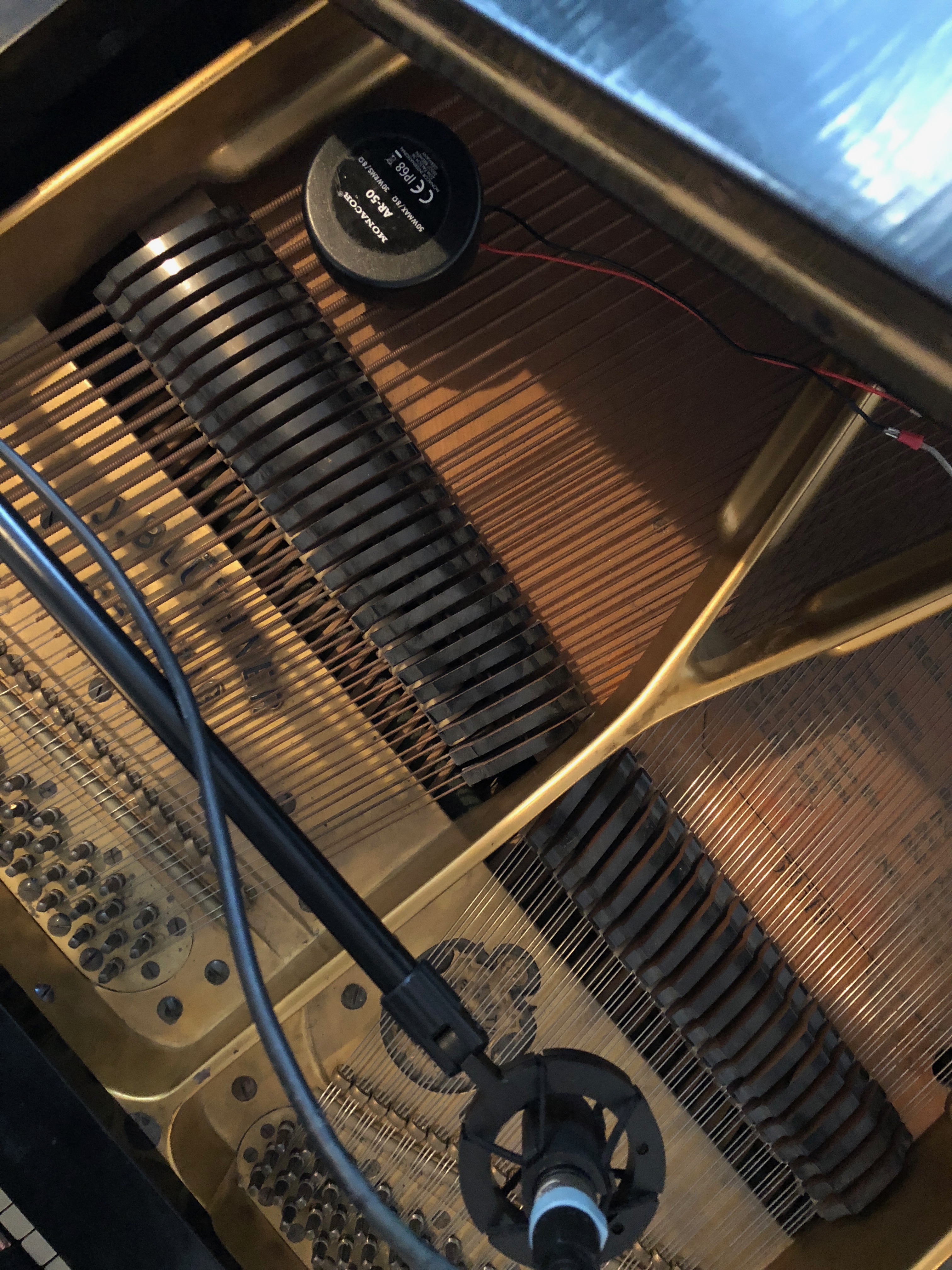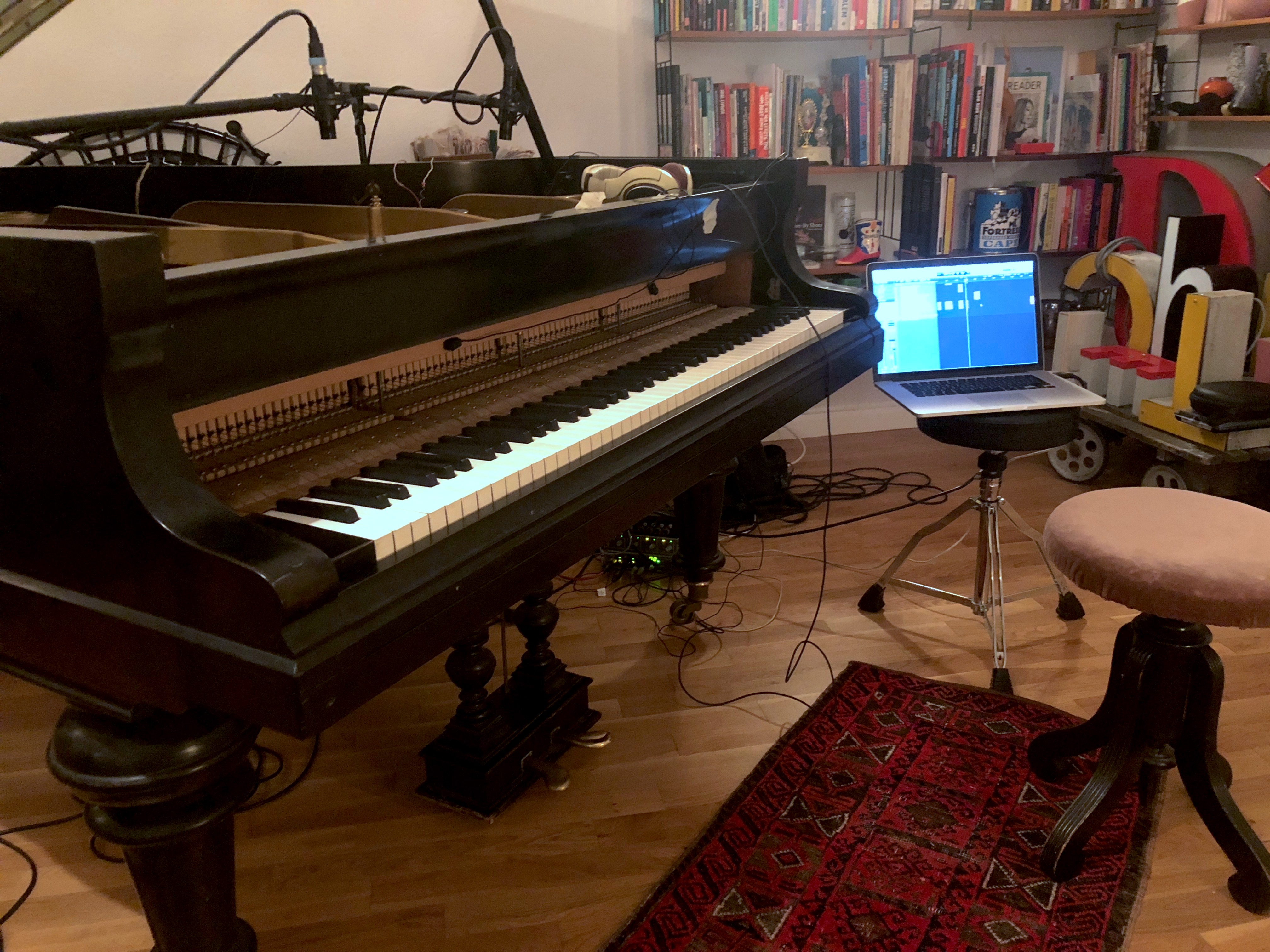Degradation Is Just
A/Version of Change
Performed At NoiseBombing Festival 29.3.2020
Performed At NoiseBombing Festival 29.3.2020
EAM Piece Composed For Wavefield Synthesis
Medium: 1 Blüthner Parlour Grand Piano, 1 Östlind
& Ahlmquist Upright Piano, Transducers, Various
Microphones, Ableton Live and Max MSP
EAM Piece Composed For Wavefield Synthesis
Medium: 1 Blüthner Parlour Grand Piano, 1 Östlind
Medium: 1 Blüthner Parlour Grand Piano, 1 Östlind
& Ahlmquist Upright Piano, Transducers, Various
Microphones, Ableton Live and Max MSP
Degradation Is A/Version Of Change deals with cyclic resonance and the inherent loss of information and accuracy occurring as a result of repetition and habituation. Life tends to be cyclical rather than linear, memories tend to get filtered and re-curated on an ongoing basis by the proximity of other memories and events, by our daily state of mind, by preferences regarding persons, places. Thus our history could indeed be seen as a floating narrative, never more accurate than the point of view from which it is told from. This is something that has been widely acknowledged in paradigm based studies of history and sociology during the past 3 decades. Both past, present and future events constantly resonate with each other, our partaking is based both on how we have lived through, are currently living through, and how we think we will live through certain encounters, thereby making a row of events seemingly happening in a consecutive linear order, non-separable and interconnected by nature. Rather they are being filters, triggers, agents to each other in an ongoing cause effect chain that we will probably never be able to properly overview. This ongoing resonance and volatility has been the artist’s main motivation and focus point when conceptualising the piece.


The two pianos being the two sole sound sources of the composition are of particular emotional value for the Artist, and their co-existence and connection to the topic one of the main reasons for being the main feature of the composition. They are the two main instruments he grew up and learned to play the piano with back in Sweden, thus they constitute they very raison d’être of the Artist’s musical and artistic life. Fittingly they have also both been featured on several albums and productions by the Artist throughout his adolescence and 20s.

To illustrate this the artist continued his current research on transducer and contact microphone induced structural resonance and feedback. This by having the recording of one piano being played back and resonating through the frame and body of the other, after which the new recording would be run through the first one again and so forth, in an ongoing ping pong fashion, producing a cyclic degradation and coloration of the original material where in the end the only thing that remains is the multiplied and accumulated sound of the two pianos’s bodies and specific resonances.
As the pianos are placed in different locations, and with limited access to the Blüthner Grand, convolution impulse responses from both the pianos were meticulously created in order to facilitate for this feedback loop digitally rather than manually. Convolution technique is also used in a more creative fashion in the piece using parts of the main musical material as impulse response rather than to achieve a certain room characteristic.
